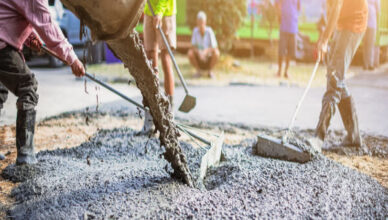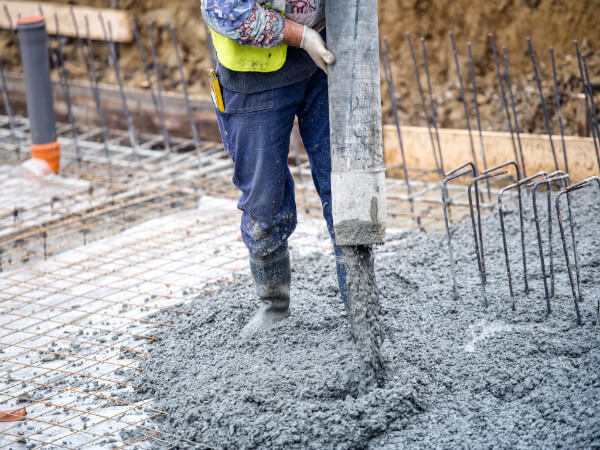Masonry is an ancient building material used for walls, floors and foundations. Its inherent durability, resilience and energy efficiency make it an essential part of contemporary architecture.
The intricacies of masonry construction are evident in iconic Gothic cathedrals and castles across Europe. In modern times, it is being reimagined by architects like Herzog & de Meuron to address challenges in our built environment. Click Here to know more.

Masonry is one of the strongest building materials around, which makes it perfect for construction projects. Whether you’re looking for a way to add some extra strength to a home’s foundation or want to build a stunning stone wall to complement your property, masonry is the way to go. It can stand up to heavy winds, earthquakes and other natural disasters without much issue. It also provides excellent insulating qualities for your house, which can help save on energy costs during the winter.
Masonry involves laying individual stones, bricks, hollow blocks and other man-made or natural building materials in a pattern that’s bound together with mortar. This is performed by masons, skilled craftworkers who take pride in their work and understand the value of a strong, well-built structure. Masonry is one of the oldest building materials known to mankind, and it’s been used throughout history for everything from castles and cathedrals to modern skyscrapers. Its longevity is a testament to its durability, and it continues to be used today in construction of hospitals, schools and homes.
While masonry is a great choice for constructing a new home, it’s not the best option for every type of project. For example, it can be difficult to create a home with a steel frame and masonry walls because of the excessive weight of the building materials. It’s also not very effective for earthquake prone areas because it relies on the weight of the bricks to keep it up, which can cause problems during an earthquake.
Another drawback of masonry construction is that it can be expensive. Because the mason needs to hand-lay each individual brick, this process can take longer than other methods of construction and may result in higher labor costs. Masonry is also not ideal for use in areas with extreme weather because it’s not as wind resistant.
The good news is that advances in masonry are making it more affordable to construct buildings with this material. Using modern techniques, masons can lay each brick individually rather than en masse like traditional builders and can reduce the amount of mortar needed to hold the building together. These cost savings can help lower the overall construction costs of a project. Plus, masonry is a green construction method that doesn’t deplete trees or other natural resources to produce.
It’s Durable
Masonry has been used to build structures for centuries and is known for its elegance and beauty. It adds class and permanence to any building and is often the choice material for buildings that are seen by large numbers of people.
In addition to beauty, masonry is durable and provides a strong building that can stand up to extreme weather. Its longevity and durability make it a good choice for homes, schools, office buildings and other commercial construction. Masonry is also resistant to pests such as termites, fungus and mold and can withstand heavy rains and strong winds.
Unlike wood-framed buildings that can be damaged by fire, masonry is a natural barrier to the spread of flames, minimizing property damage and allowing occupants time to escape safely. Similarly, masonry walls can reduce the impact of earthquakes. Reinforced concrete masonry is especially effective against lateral forces (e.g., from wind) because of its mass, which resists bending.
As a construction material, masonry is highly energy-efficient and helps to control heating and cooling costs. Its thermal mass allows it to absorb heat and release it slowly, reducing the need for air conditioning and heating systems. Masonry also offers acoustic insulation, which contributes to a quiet environment for building occupants.
Masonry is also environmentally friendly, because it doesn’t have to be constantly replaced or repaired like other materials. Its long lifespan means fewer resources are needed to replace it, which is a huge benefit in the green building movement.
Its low embodied energy and recycled content also help with LEED certification requirements for sustainable construction. Masonry also contributes to a building’s resiliency and indoor environmental quality by providing insulation, preventing moisture from damaging the structure, and helping to maintain a healthy humidity level.
One of the biggest challenges with building construction is overcoming delays caused by bad weather. Masonry block constructions, however, offer a solution by being able to continue to be built even in bad weather conditions. This is because the mortar can cure outside, and work on interior spaces can start much sooner. Masonry block constructions are also much faster to construct than wood frame buildings, which can take longer to become weather tight and prevents any work being done on the inside until it is ready.
It’s Aesthetically Pleasing
Masonry is an art form, and it can add beauty to any home or building. The ability to work with stone, brick, and concrete gives masonry contractors the opportunity to create stunning structures that are both functional and appealing. Masonry is one of the oldest construction methods, and it continues to be a popular choice for modern buildings because of its durability and longevity.
The skill of masonry has been around for as long as human civilization, and it was used in iconic historical structures like the pyramids and the Parthenon. Today, it is still one of the most popular construction techniques because it is versatile and aesthetically pleasing.
Masonry can be used to create a variety of different elements, including walls, floors, and fireplaces. It’s also commonly used to create retaining walls and pathways. Masonry can add beauty and character to a garden or patio, and it can even help to create a seamless transition between indoors and outdoors.
Stone and brick are durable materials that hold up to harsh weather conditions. They can also provide a level of insulation that reduces energy costs. This makes brick and stone buildings more cost-effective to live in than those constructed of drywall or wood.
Brick masonry is classic and timeless, and it can add a sense of tradition to any home. It can also complement the look of a modern structure by adding contrast to its design. Skilled masons can lay bricks in a variety of patterns, including running bond and Flemish bond, to achieve a desirable look. Masons can also use various tools to ensure that the joints in brickwork are properly sized and spaced, which helps to maintain the integrity of the structure.
Many homeowners choose to enhance the aesthetic of their masonry structures with a decorative element, such as a stone veneer. These can be installed over existing masonry walls to create a unique and eye-catching style that will turn heads. Masonry veneers are available in a range of colors, styles, and textures, making it easy to find the perfect match for any home.
It’s Sustainable
Masonry is a sustainable construction method that offers many environmental benefits. For starters, it uses natural materials like sand and gravel, which have little impact on the environment during extraction. It also often utilizes recycled materials in its production, as well as a range of other environmentally friendly building techniques such as precast slabs, in-place pouring, and onsite manufacturing of masonry units. It is also non-combustible, reducing its carbon footprint and offering a safer construction option during natural disasters that can cause the loss of water supply, resources, or access.
It is also a highly energy efficient material that helps moderate temperatures throughout buildings. Its thick cellular structure offers significant thermal mass, meaning that it can store and release heat as needed. Additionally, it typically has fewer gaps than structures made with other construction methods, allowing for better air and moisture sealing, further boosting energy efficiency. New masonry products with integrated insulation also offer enhanced performance.
In addition, masonry is easy to recycle and reuse for future projects, especially concrete. This is because concrete is a very durable material that has an average lifespan of 100 years or more, and it is easy to dismantle when necessary. In fact, it’s not uncommon to see buildings that were constructed of masonry more than a century ago still standing and in good condition.
The recycling and reusing of wastes, particularly construction waste (CW), is a fundamental way to achieve sustainability. CW includes a wide range of materials, including concrete, tile, bricks, wood, asphalt blends, and soils. It is not a new practice, either; the ancient Romans were already accustomed to using existing materials for new construction for economic and practical reasons.
It is also important to note that masonry is not a resource-intensive construction material, which is why it has been used in numerous historic sites across the globe. The material requires very little maintenance and cleaning to maintain its beauty, making it a perfect choice for commercial and residential properties that will be around for the long-term. In contrast, other types of buildings that are frequently put up and torn down, such as timber-frame construction, require a great deal of maintenance work to keep them looking their best.












